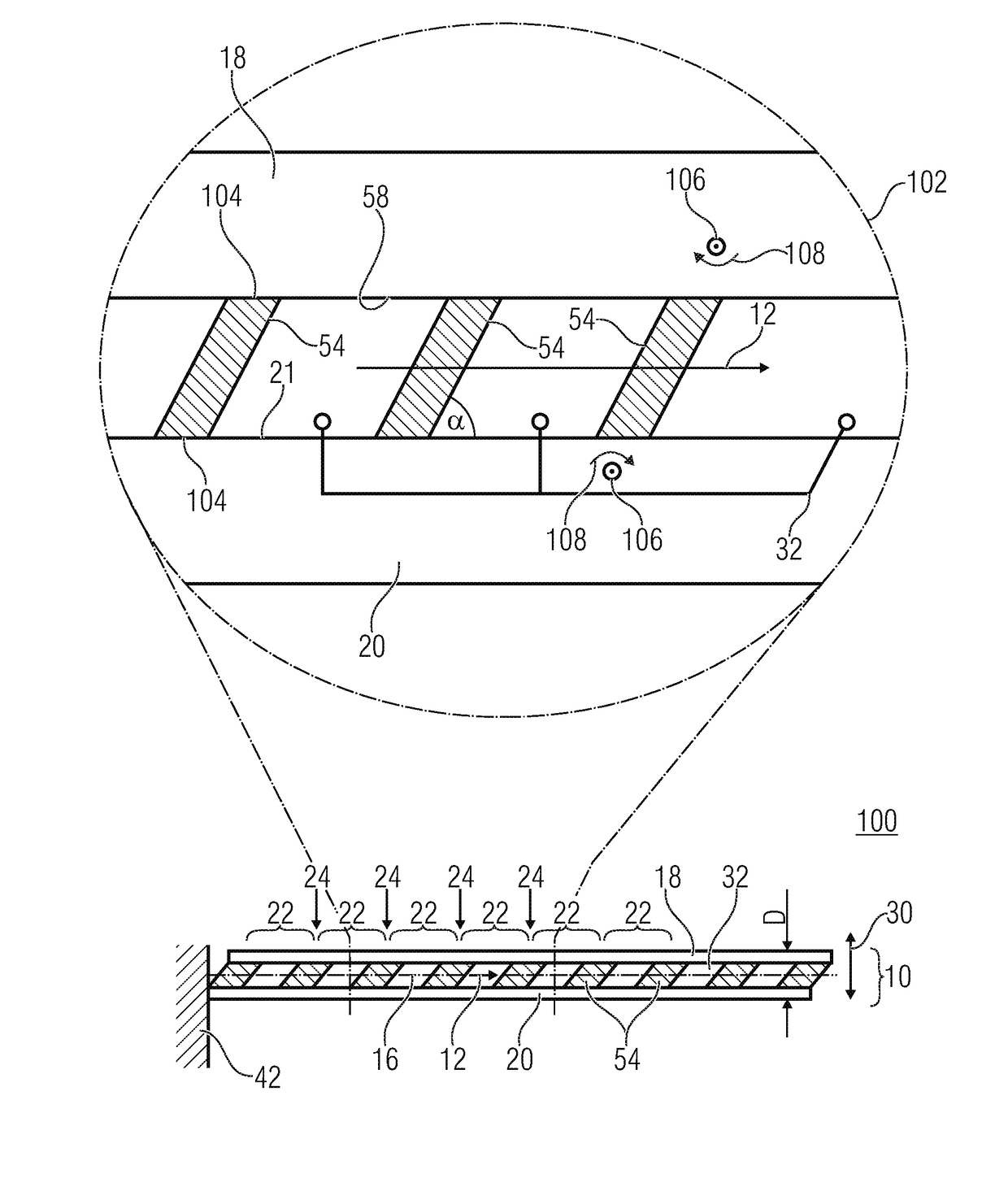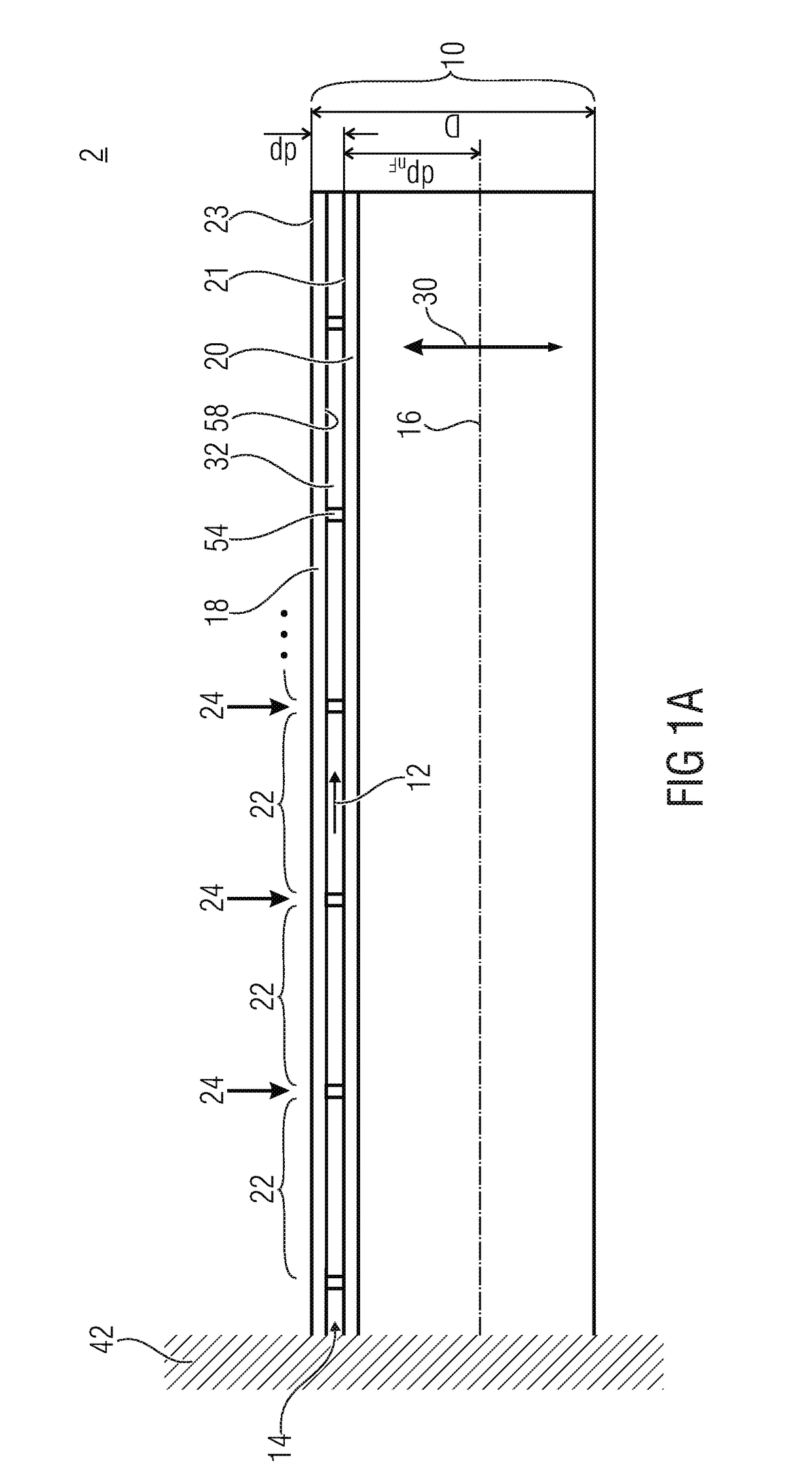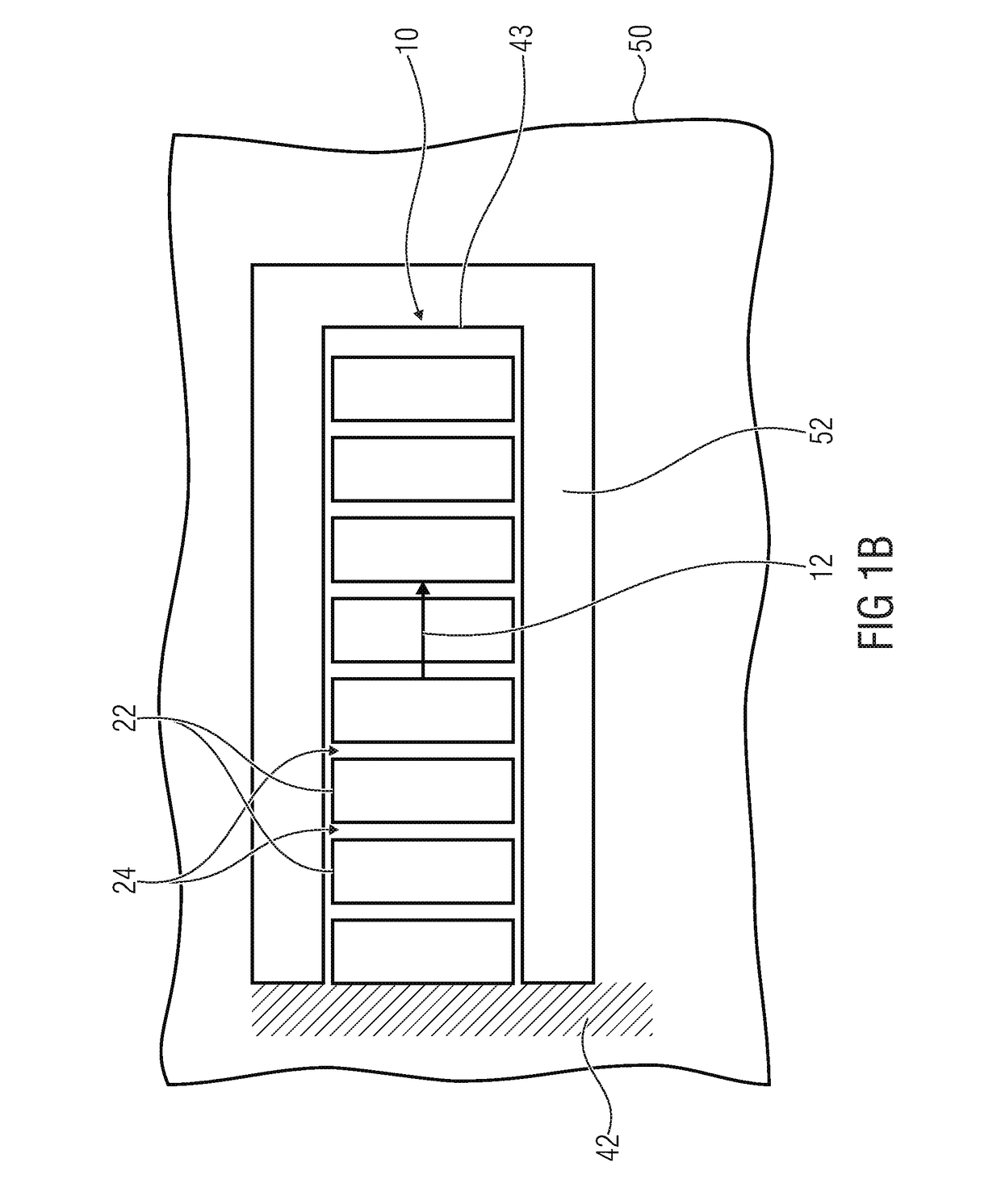Micromechanical device with an actively deflectable element
a micromechanical and active technology, applied in the direction of microelectromechanical systems, semiconductor devices, electromechanical/electrostrictive/magnetostrictive devices, etc., can solve the problems of slow response, further problems, and restricted material set, so as to achieve tremendous relief of manufacturing.
- Summary
- Abstract
- Description
- Claims
- Application Information
AI Technical Summary
Benefits of technology
Problems solved by technology
Method used
Image
Examples
Embodiment Construction
[0051]Before starting with the description of embodiments of the present application in accordance with various aspects of the present application, comparison embodiments of micromechanical devices are described so as to form a reservoir of possible variations in implementing the layer stack which is commonly used in accordance with the subsequently explained embodiments of the various aspects. It is to emphasized, however, that the deflection principle on which these comparison embodiments are based, differs from the principle being the subject of embodiments of the first aspect. Nevertheless, the structural variations of the comparison embodiments as far as the layer stack and the spacers and the gap therebetween is concerned shall be applicable so as to vary embodiments described later with respect to the first aspect, irrespective of the other elements shown in these figures and not occurring in the first aspect's embodiments. With respect to the embodiments of the second and th...
PUM
 Login to View More
Login to View More Abstract
Description
Claims
Application Information
 Login to View More
Login to View More - R&D
- Intellectual Property
- Life Sciences
- Materials
- Tech Scout
- Unparalleled Data Quality
- Higher Quality Content
- 60% Fewer Hallucinations
Browse by: Latest US Patents, China's latest patents, Technical Efficacy Thesaurus, Application Domain, Technology Topic, Popular Technical Reports.
© 2025 PatSnap. All rights reserved.Legal|Privacy policy|Modern Slavery Act Transparency Statement|Sitemap|About US| Contact US: help@patsnap.com



